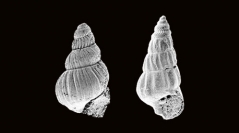

 Comptes Rendus Palevol
4 (6-7) - Pages 501-515
Comptes Rendus Palevol
4 (6-7) - Pages 501-515Gastropod rebound from the end-Permian mass extinction event initiated in the Olenekian and diversification continued until the Carnian. The most diverse and abundant Early Triassic gastropod faunas are from the Moenkopi Formation (Utah) and the Upper Werfen Formation (Europe, Alps), which contribute as much as 50% to the reported global gastropod diversity of the Early Triassic. Gastropod faunas with more than 10 to 15 species are unknown from the Induan. However, the Olenekian fauna from the Sinbad Limestone (Moenkopi Formation) comprises 26 species. Faunas with more than 100 gastropod species have not been reported prior to the Late Anisian. The number of reported gastropod taxa continues to rise until the Carnian. Several caenastropod groups and the opisthobranchs have their first occurrence in the Olenekian, which indicates a major turnover within the Gastropoda. Typical Palaeozoic gastropod groups were rapidly replaced and Early Triassic gastropod faunas are distinct form Late Palaeozoic faunas. Zygopleura rugosa Batten and Stokes is transferred to the genus Ampezzopleura and its diagnostic larval shell is reported for the first time. It corroborates the view that the highly diverse pseudozygopleurids became extinct at the end-Permian mass extinction event and were replaced by the superficially similar Mesozoic Zygopleuridae.
Late Palaeozoic, Early Triassic, Gastropods, mass extinction, biotic recovery